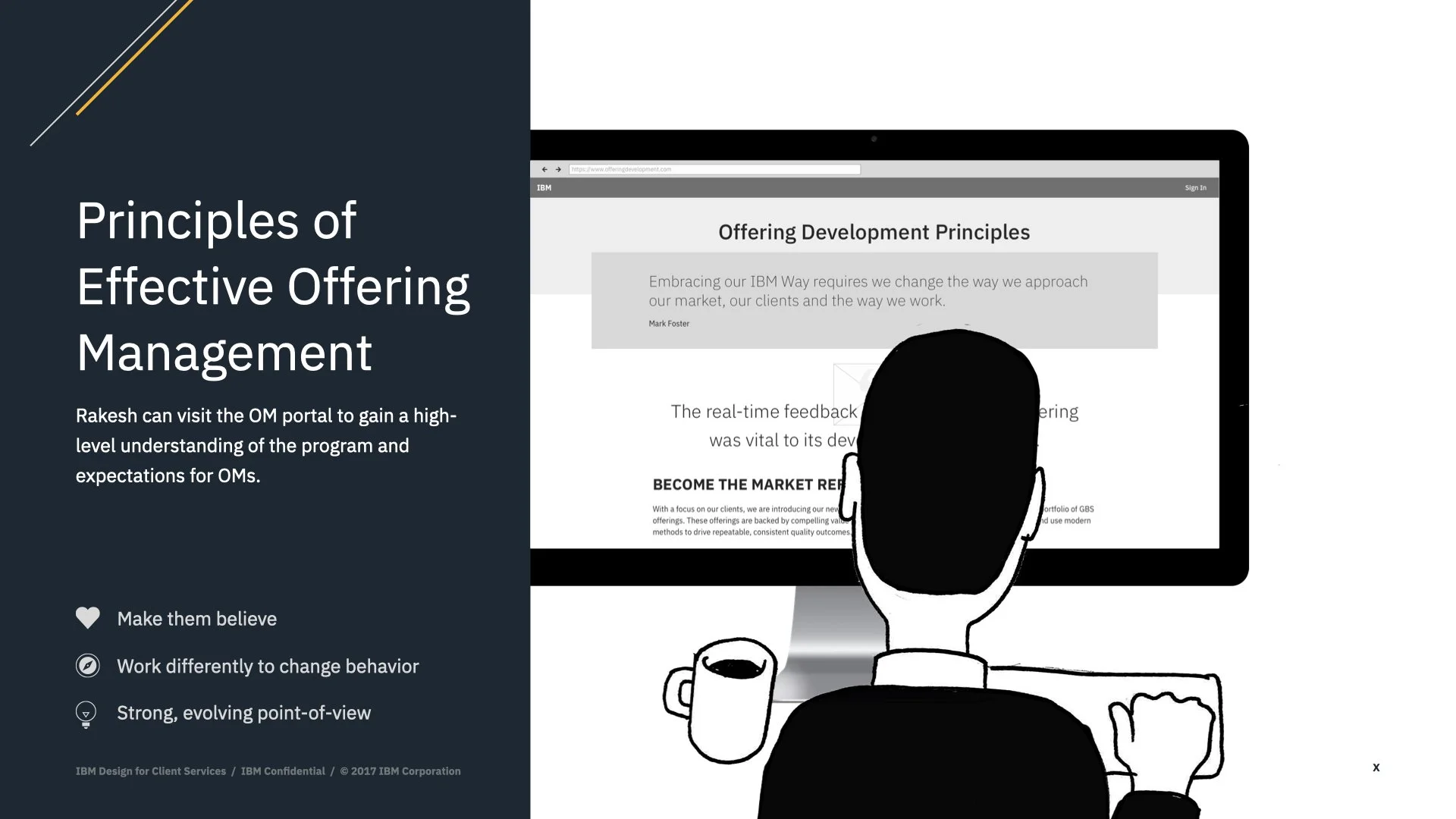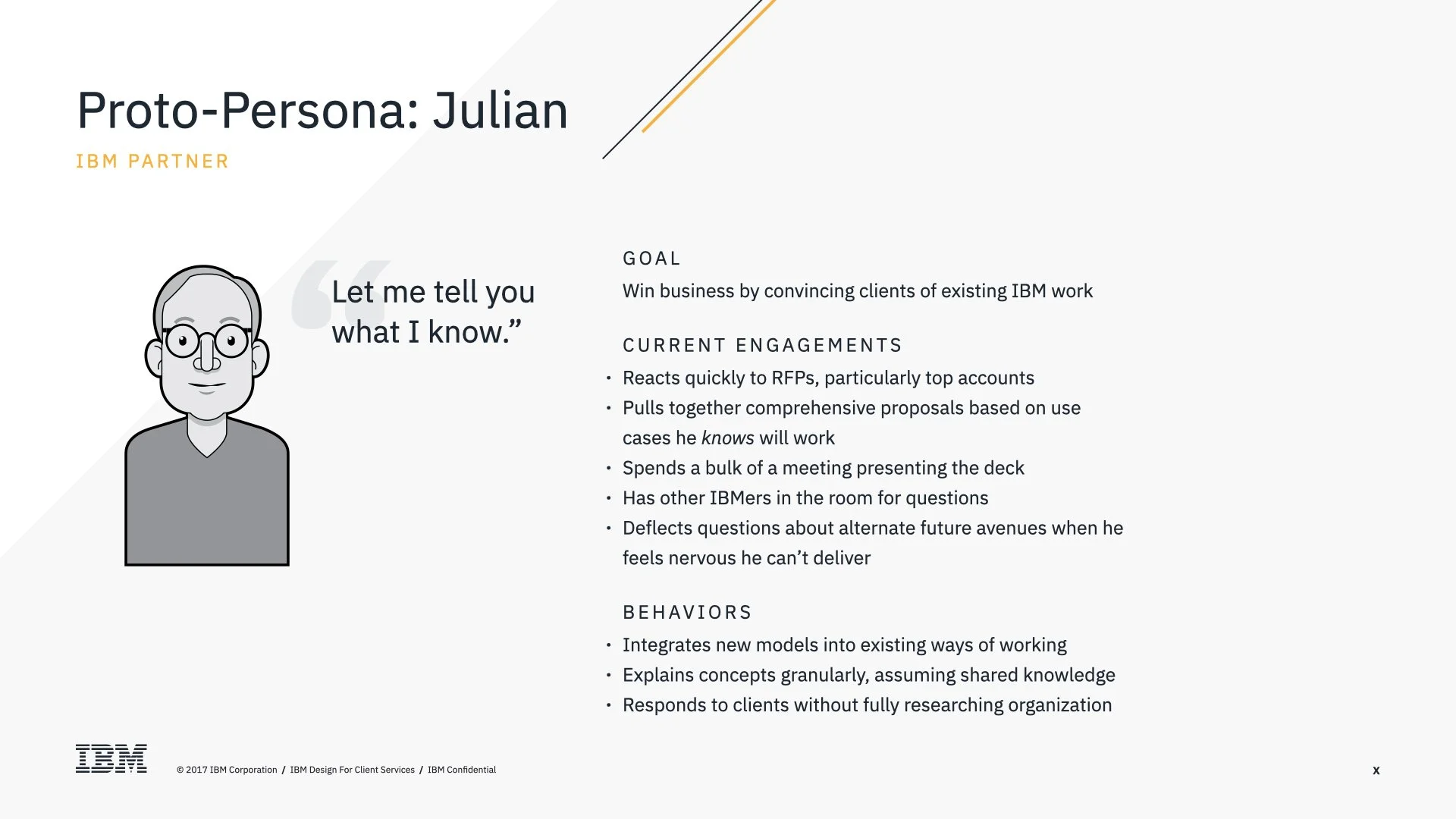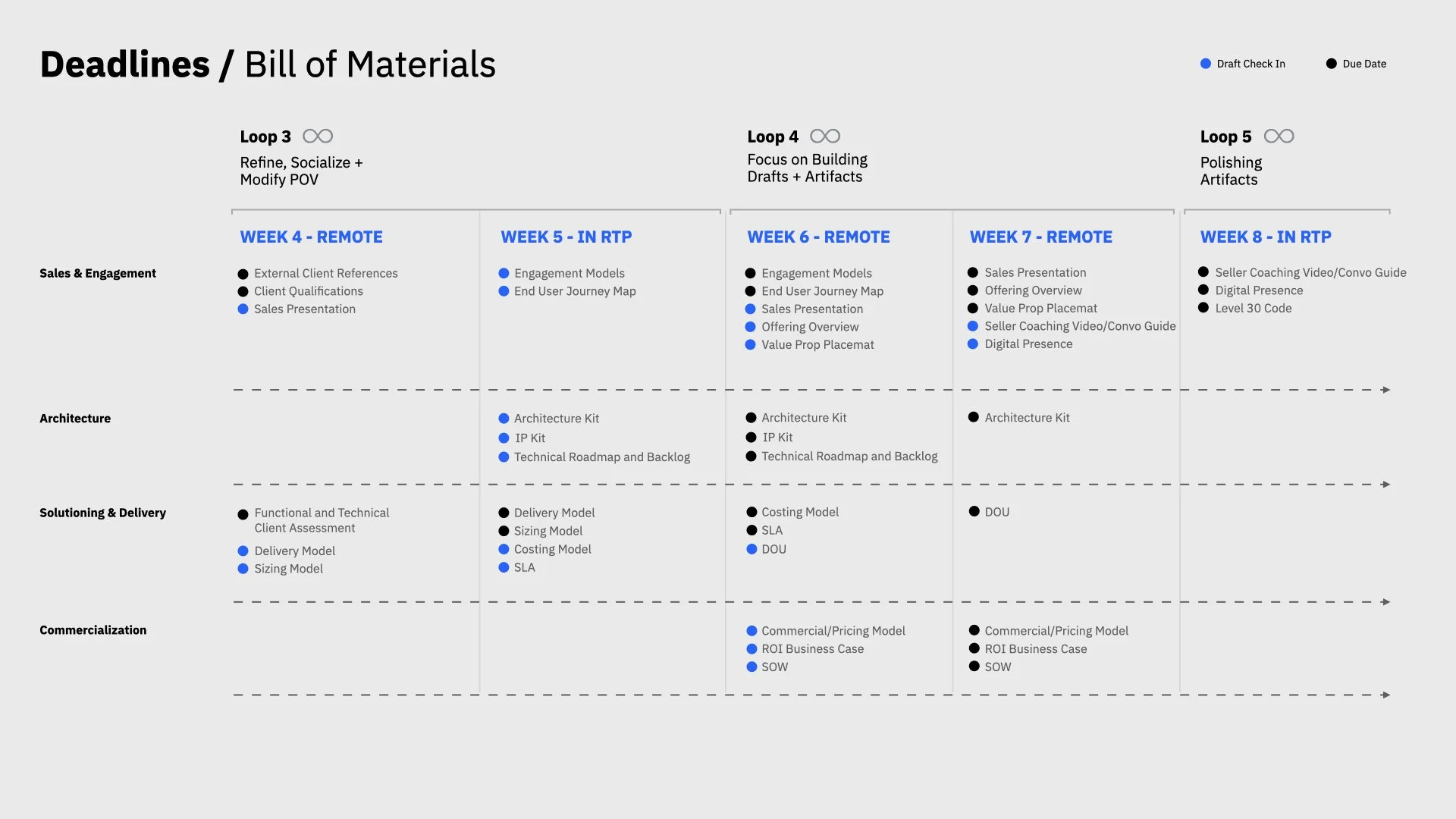IBM Offering Development
Refining the process of creating and launching offerings
With the support of executive leadership, the IBM Design for Client Services team infused design thinking to refine the process by which offerings are created and launched at IBM. The multifunctional team applied user experience and service design best practices to plan an eight week sprint that enabled offering teams to efficiently craft a comprehensive Bill of Materials (BOM) in support of fresh and innovative offerings.
The key deliverables were a service design blueprint which mapped out the 8 week sprint, supporting documents to introduce and guide users through the various stages (loops) of the sprint, and a web application that enabled collaboration between team members, organised their findings, and ‘built’ their BOM.
I served in a hybrid role consisting of ux, service, and content design and my responsibilities were to coordinate week 5 of the sprint and to produce the supporting materials.
Overview
Sprint blueprint
Offering teams at IBM are comprised of 8 to 10 members, each with different areas of expertise and often spread all across the world. Collaboration across timezones is difficult. Often, team members have been through the process of developing an offering multiple times and are very familiar with the final deliverable, the BOM. The BOM is typically 80 pages in length and broken down by sections which, to simplify it, are intended to analyse the market, identify an opportunity, introduce a solution, and lay out a plan for release. There are various hurdles to clear as the offering is developed and the BOM serves as a comprehensive checklist of sorts. While familiarity with this document certainly has its advantages, there are also key disadvantages that can compromise the offering’s value. A copy and paste mentality often sets in which can not only produce confusing errors, it also can hinder innovation.
Our challenge was to create an experience that would enable collaboration between team members across the globe while providing a platform for them to create innovative and market shifting offerings.
The Challenge
Slide from stakeholder playback introducing overarching principles
It was vital to understand the state of the current process in order to identify points of friction. User research provided extensive synthesis on the existing pain points, gathered through interviews and observation. We developed a keen understanding of each role within an offering team, what the team members bring to the table, and the obstacles in place that prevent their best work. Lastly, we became deeply familiar with the Bill of Materials in order to understand exactly what was being asked of the offering teams with the laborious creation of this massive document. Armed with this information, we developed and proposed a solution.
While much of the concept was developed through workshopping and brainstorming amongst the entire ~15 member design team, my most easiest to quantify contribution was the planning of week 5 of the sprint. Week 5 would be one of the 3 in-person weeks of the sprint. All members of every offering team would report to the same location and the week culminated in an Offering Fair and a check-in with leadership. This week included an important hurdle to clear. A business case was presented to leadership who would either pull the plug or give approval. In most cases, if a team made it through week 5 they were home free. Because of both the investment required to bring multiple members of multiple offering teams, subject matter experts, and leadership from across the globe to a single location, and the stakes at play, every minute counted. Each day was planned in 15 to 30 minute increments with the aim of fully taking advantage of having each stakeholder in the same room. I also produced a welcome packet that would help teams jump right into the work upon arrival.
Alongside the service blueprint, we designed a web application called IBM View Point that would guide teams through each stage of development. Its key principles were to facilitate collaboration between teams who were physically widespread and extract information in an elegant way in order to produce the BOM. The BOM was standardised and teams were trained to think of it as a template to fill out. Through the design of the app, we challenged teams to change their way of thinking. For example, rather than asking the team to create a competitive analysis during week 2 of the sprint, we asked a series of specific, bite-size questions and allowed team members to edit and fine-tune their answers within the application. In answering these questions, teams were organically creating the various components of the Bill of Materials.
The Approach
Slide from Statekholder playback introducing user goals and behaviors
Slide from Stakeholder playback providing user insights
By all accounts, this was a hugely successful endeavour. Offering teams raved about the overall improved experience. The initial feedback was that it made work more efficient and easier to complete and allowed team members to make the best use of their time. And after a couple of these sprints were completed, it became clear that the distillation of the BOM creation process brought about more innovation. The business unit once known as GBS is now called IBM Consulting, and quarter after quarter it is a leader in revenue produced, typically finishing first or second across the company.
Outcomes
Mid-fidelity wireframe
Artefact provided to sprint participants highlighting key deliverable deadlines



